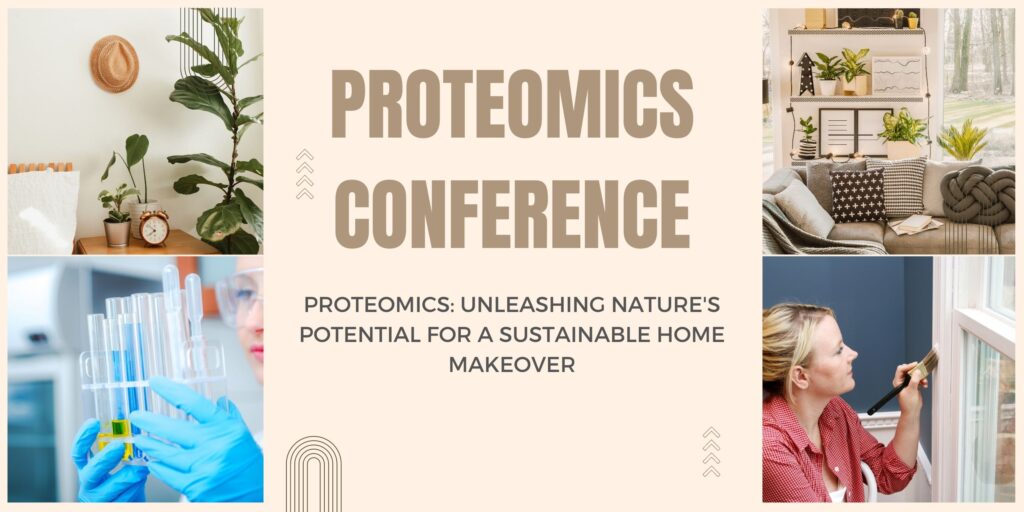The building industry and home improvement are on the cusp of a revolutionary change. The field of proteomics, which focuses on the systematic study of proteins, has ushered in a plethora of opportunities for the creation of novel and environmentally friendly bio-based materials. Proteomics plays a significant role in revealing the potential of these materials for usage in a wide range of applications as the world strives toward greener solutions and eco-friendly alternatives. This article will discuss how proteomics is leading to the creation of new bio-based materials, which is causing a revolution in the home renovation and building industries.

Proteomics and its function in the creation of bio-based materials
Proteomics is the study of proteins in their biological contexts, including their structure, function, and relationships. Researchers can learn a great deal about the molecular mechanisms that underlie a wide range of biological functions by studying proteins. When applied to bio-based materials, proteomics elucidates the role proteins play in determining material characteristics and performance.
Proteins, for instance, are crucial to the formation of biopolymers and natural fibers, which are replacing more conventional building supplies. Researchers can learn how to enhance the mechanical characteristics, durability, and performance of bio-based materials by researching these proteins and their interactions, which could lead to wider acceptance of these materials in the home repair and construction industries.
Using Renewable Resources for Domestic Remodeling
The term “bio-based materials” refers to those that are created using renewable biological resources. These materials have a smaller carbon footprint and greater resource efficiency compared to more conventional building supplies. The following are some instances where bio-based materials were used:
Alternatives to conventional synthetic adhesives can be found in bio-adhesives, which are derived from proteins and other natural chemicals. More effective and long-lasting bio-adhesives can be developed for uses like wood bonding and insulation with the aid of proteomics, which identifies the main proteins responsible for adhesive characteristics.
Materials that blend natural fibers like cellulose with a bio-based polymer matrix are called biocomposites. In order to create biocomposites with enhanced mechanical qualities and performance, proteomics can be employed to examine the protein interactions inside these materials. Flooring, wall panels, and furniture are just some of the many uses for these materials in the realm of home repair.
More environmentally friendly alternatives to conventional insulating materials like fiberglass and mineral wool can be made from renewable resources like wood fibers, cellulose, or even animal-derived materials like sheep’s wool. Proteomics provides insight into the proteins responsible for the structure and performance of these materials, allowing for the optimization of their thermal and acoustic insulation qualities.
Proteomics-driven developments in bio-based materials
Some of the many ground-breaking advancements that have resulted from using proteomics in the creation of bio-based materials are discussed below.
By analyzing the proteins in charge of the body’s own self-repair mechanisms, scientists have created bio-based materials with self-healing characteristics. These materials could significantly alter the home improvement industry by decreasing the need for repairs and increasing the useful life of many building parts.
Coatings and finishes of the highest caliber have been developed using natural proteins thanks to proteomics. Paints, varnishes, and protective coatings can all benefit from the increased wear-, UV-, and microbiological growth-resistance provided by these coatings.
In addition, proteomics has paved the path for the creation of sensors based on proteins, which can be incorporated into smart home technology. These sensors can monitor things like indoor temperature, humidity, and air quality in real time, offering valuable information that can be utilized to improve things like a home’s comfort, security, and energy savings.

Difficulties and Prospects
Despite their many advantages and potential breakthroughs, proteomics-driven bio-based materials have yet to be widely adopted in the home renovation and construction industries.
Expense: Research and development costs, as well as the costs of scaling up manufacturing, can make bio-based materials more expensive to produce than their traditional counterparts. Costs are predicted to decrease, making these materials more competitive, as demand rises and production processes grow more efficient.
In order to assure their safety and performance, bio-based materials must conform to a wide range of regulations and standards, as is the case with any cutting-edge innovation. This can be a costly and time-consuming process, which could hinder the widespread use of these materials.
While the public as a whole is becoming more educated about the value of sustainable and environmentally friendly materials, some individuals may still have doubts about the reliability of products made from bio-based sources. The benefits of these materials and their potential to completely change the home renovation and building industries need to be widely disseminated to the general population.
Despite these obstacles, proteomics-driven bio-based materials in the construction and renovation of homes have bright future potential. A more sustainable and environmentally friendly constructed environment will be the result of increased accessibility, lower costs, and widespread use of these materials as research into their use continues and new technologies are developed.
Conclusion
Proteomics is changing the face of the construction industry by revealing the hidden possibilities of bio-based materials. Researchers can design novel and environmentally friendly substitutes for conventional building materials by learning more about the function of proteins in their growth and performance. Proteomics-driven breakthroughs like bio-adhesives, self-healing materials, and improved coatings are ushering in a more environmentally friendly and sustainable era of house renovation and building.
There is a growing need for the use of bio-based materials in house renovation and building as the globe struggles to adapt to the effects of climate change and diminishing natural resources. The entire potential of these materials can be realized by adopting proteomics, leading to a more sustainable and environmentally friendly constructed environment for future generations.